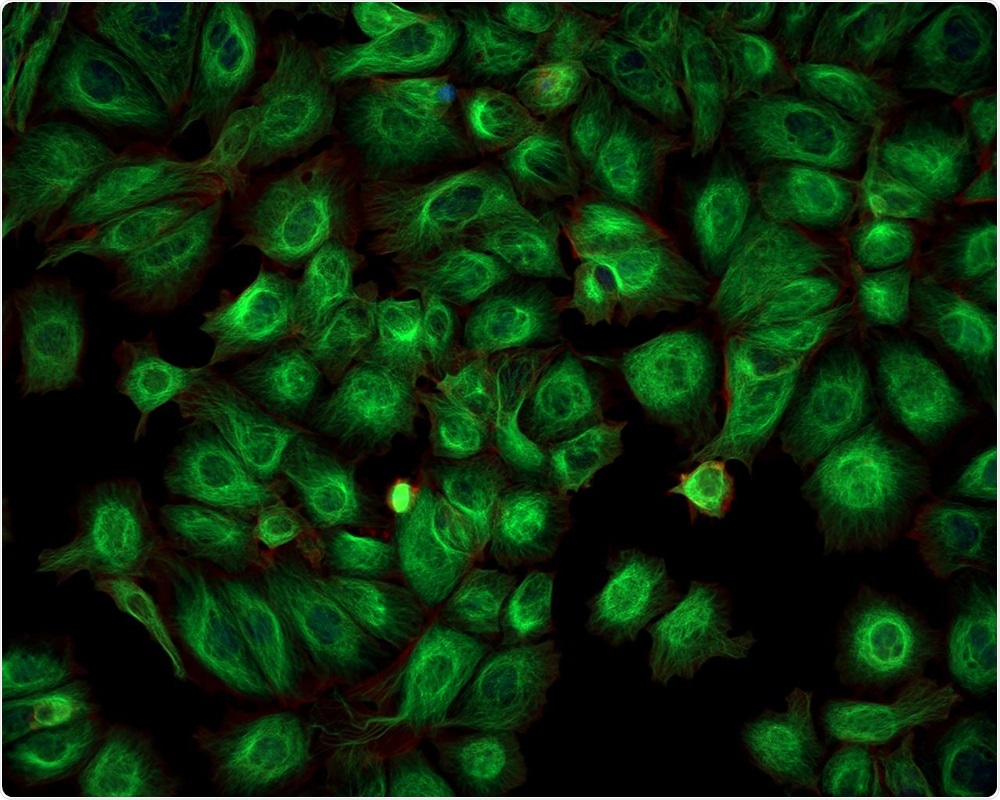Ultrasound scans have become a major part of the healthcare experience for physicians and patients alike. However, they are also important in research on living cells as they do not cause major harm. Accurate, inexpensive and simple to learn, ultrasound scanning still has a few surprises in store.
Cells keep turn genes off and on to regulate gene expression. Traditionally, the detection of activated genes involves the use of fluorescent markers like green fluorescent protein (GFP) which glow when the gene is active. This is known to work well for cultured cells which can be examined in their Petri dishes, but inside the body of an organism, how is such fluorescence to be seen?
Bubbles: making cells inside the body visible to ultrasound
The researchers came to a conclusion: use ultrasound, a non-invasive and harmless technique, to look into living bodies and pick up these cells. But they ran into another difficulty: a single cell can’t really be distinguished separately using the commonly used ultrasound wavelengths.
The scientists then found some bacteria that live in water, and produce protein-encapsulated air bubbles at microscopic scale to keep themselves afloat. These make the host cells highly detectable by ultrasound by increasing the number of reflected waves that reach the ultrasound probe.
The concept was put to the test last year, when the researchers inserted gut bacteria that had been modified by the injection of bubble-forming genes, into the intestines of living mice. Using ultrasound, they were able to detect the bacterial clusters in the gut.
Gene constructs: modifying bacterial genes for mammalian cells
But bacterial genes don’t work like mammalian genes, so they next worked on adapting their technique to allow the same genes to work inside mammalian cells. For instance, each bacterial gene needs a promoter which switches on the process of producing the protein encoded by the gene. The promoter can be and typically is shared by many bacterial genes together.
But mammalian genes are stricter: each requires its own promoter. The researchers cleverly used a viral protein to stick several bacterial genes together, so that they could ‘fool’ the mammalian cell into thinking of them as a single mammalian gene and switching them all on with a single promoter.
In this way, they succeeded in proving that nine inserted bacterial genes in the form of three plasmids caused satisfactory bubble formation within human embryonic kidney (HEK) cells in a culture dish. This is the first time that more than six genes have ever been moved from a bacterium to a mammalian cell.
 Caleb Foster | Shutterstock
Caleb Foster | Shutterstock
Increasing the contrast
Ultrasound scanning picked up the presence of these cells but not of control cells that didn’t form bubbles.
They increased the resolution by using a technique to deflate the bubbles by increased ultrasound pressure, which allowed a clear distinction between the background and bubble-containing signals. This did not appear to harm the cells, and repeated readings could be taken.
These genes therefore act as molecular reporters, signaling the presence of the active gene inside the cell that is detected by the ultrasound scan. The researchers called them mammalian acoustic reporter genes (mARGs).
Proof-of-concept: gene activation in mouse tumors
They created a single line of HEK clones that consistently produced bubbles when the promoter was exposed to the drug doxycycline, and which could be detected even at a low concentration of 2.5% when mingled with other cells. They then put these cells into mice. These produced mouse tumors, which were then induced to express the mARGs by treating the mice with doxycycline.
When imaged with GFP, the tumors showed nonspecific green patches, lacking any precise localization of reporter genes. However, ultrasound showed much clearer images. Only the cells at the tumor borders showed bubble formation, which showed mARG activation.
Since the greatest vascularization was to be seen at the periphery of the tumor, this area was expected to show the highest response to doxycycline. Doppler ultrasound confirmed this pattern of new vessel growth. The tissue was later examined microscopically, confirming the presence of active genes only at the tumor periphery.
Conclusion
Thus a genetically engineered construct could serve to monitor the presence and function of specific genes inside mammalian cells. Optical reporters show the presence of a particular activated gene, allowing specific cell populations to be detected in a mixed sample, but usually only in culture or in tissue biopsy samples. In contrast, the present technique allows noninvasive detection of gene expression in vivo.
The technology used is highly sophisticated, and most researchers wouldn’t be able to take advantage of this approach, says Sreekanth Chalasani, a neuroscientist in California. However, the researchers look ahead to refining the technique, making it more convenient and versatile by modifying the gene constructs.
This would be of great help in actually probing unknown areas of the biology of mammals and biomedicine.
Source:
Journal reference:
Ultrasound imaging of gene expression in mammalian cells. Arash Farhadi, Gabrielle H. Ho, Daniel P. Sawyer, Raymond W. Bourdeau & Mikhail G. Shapiro. Science 365, 1469–1475 (2019). doi:10.1126/science.aaz6470.